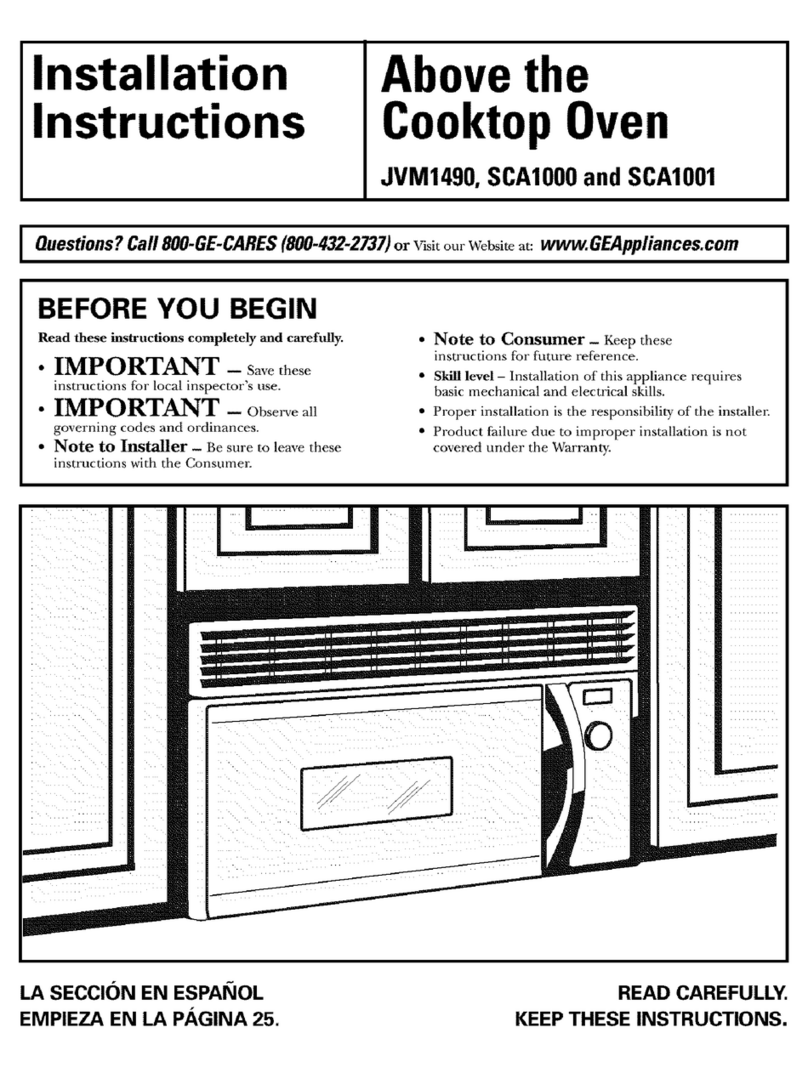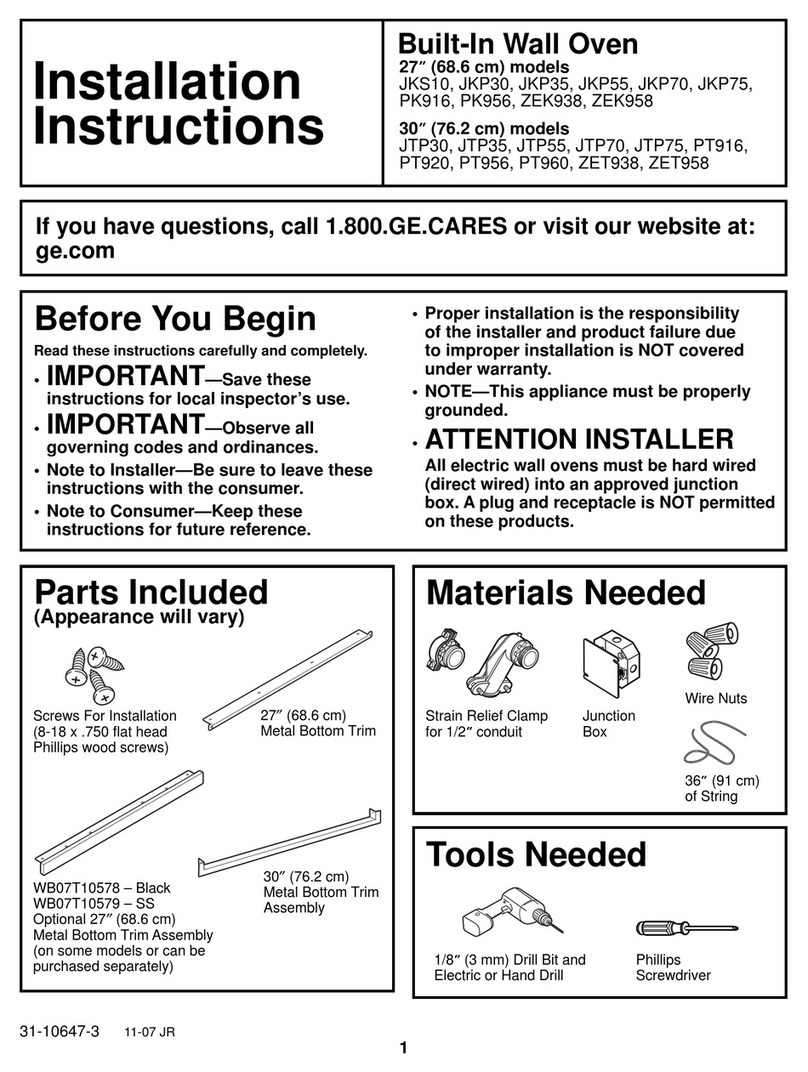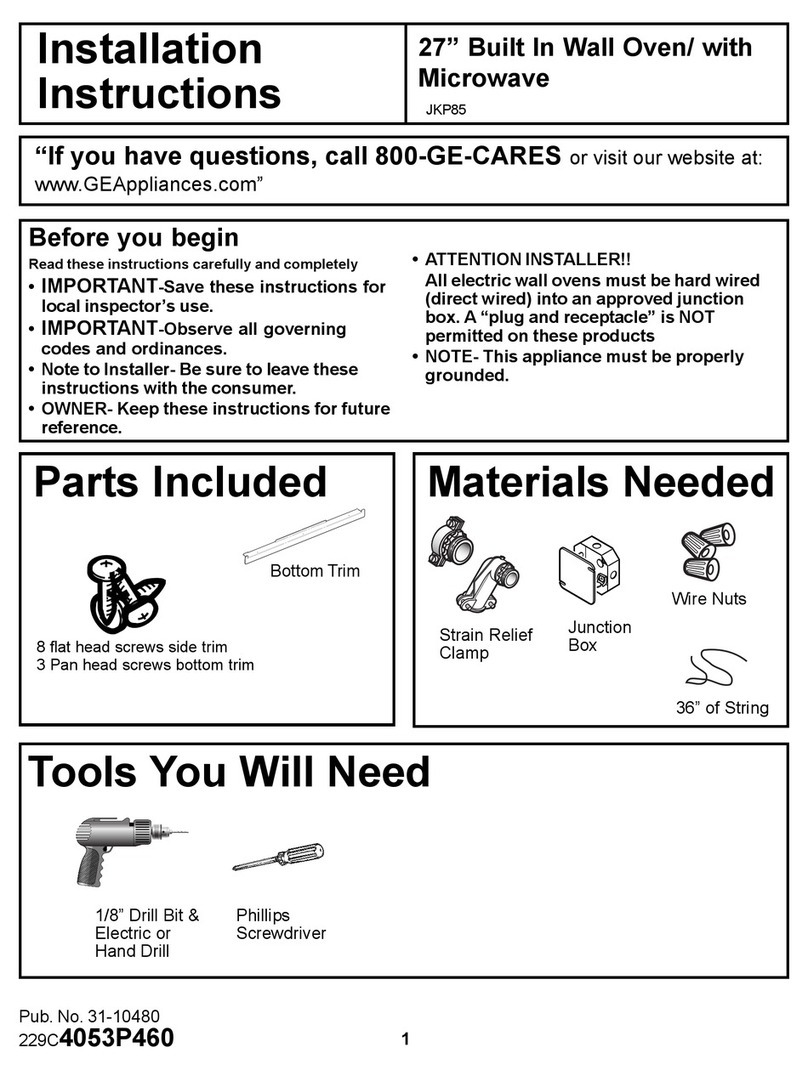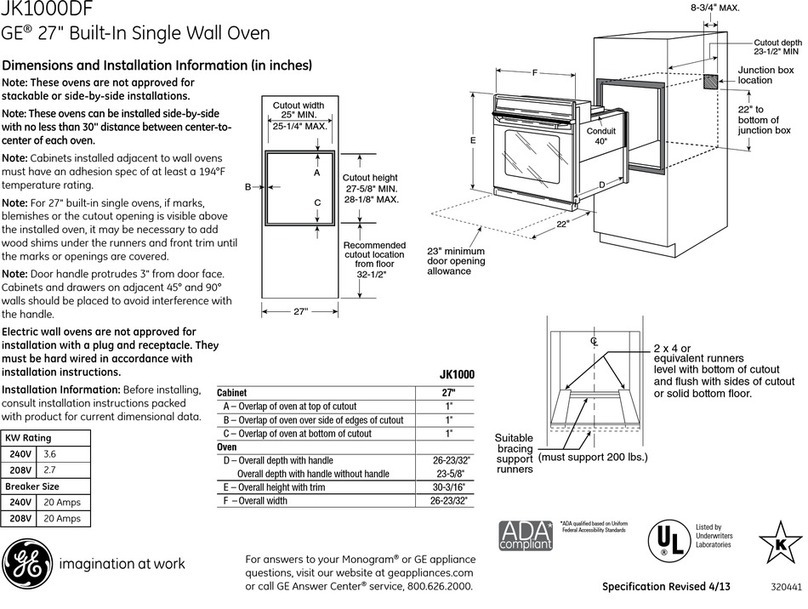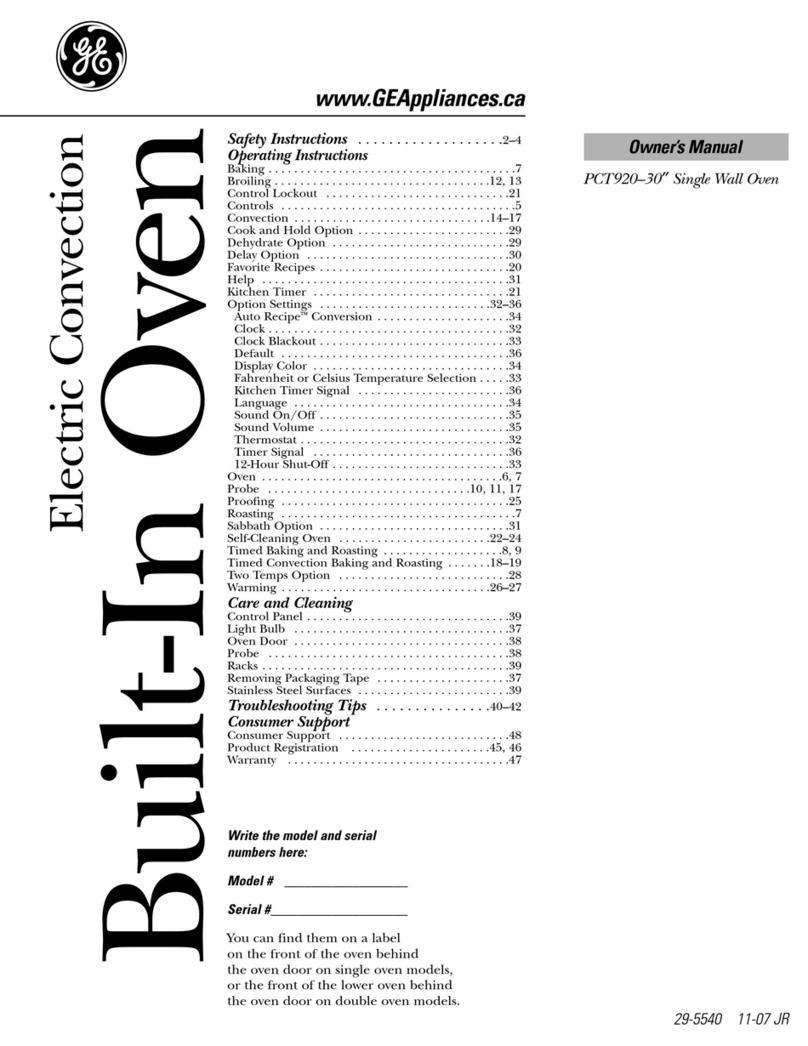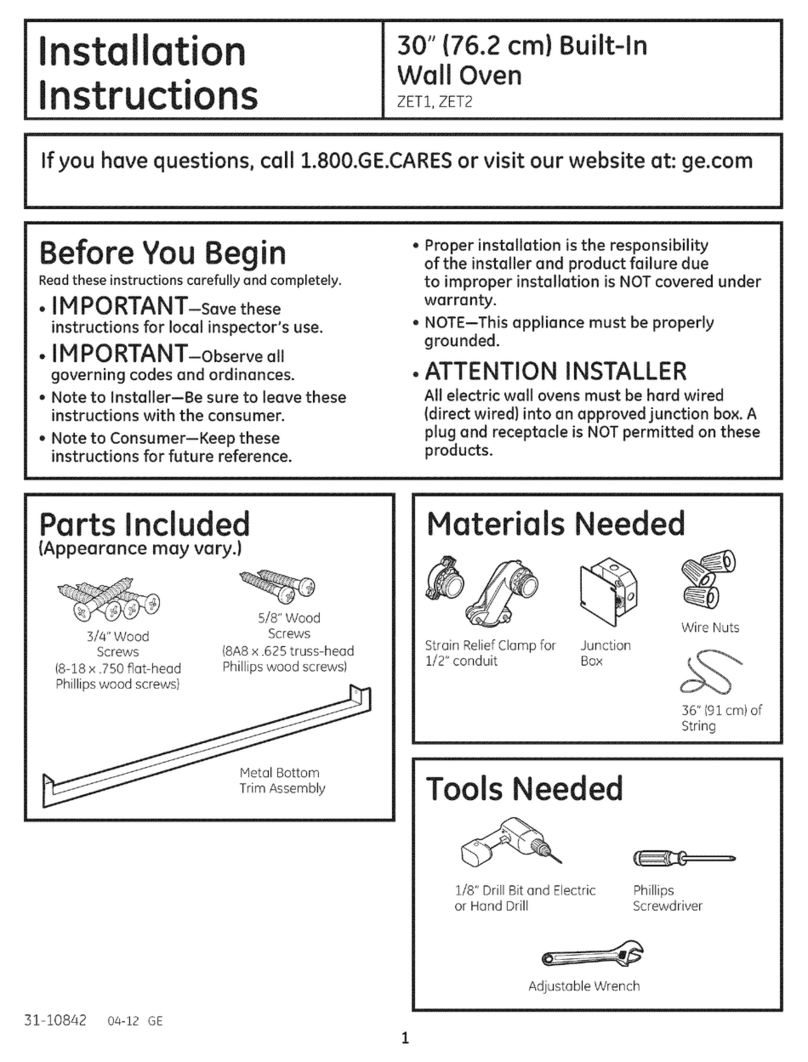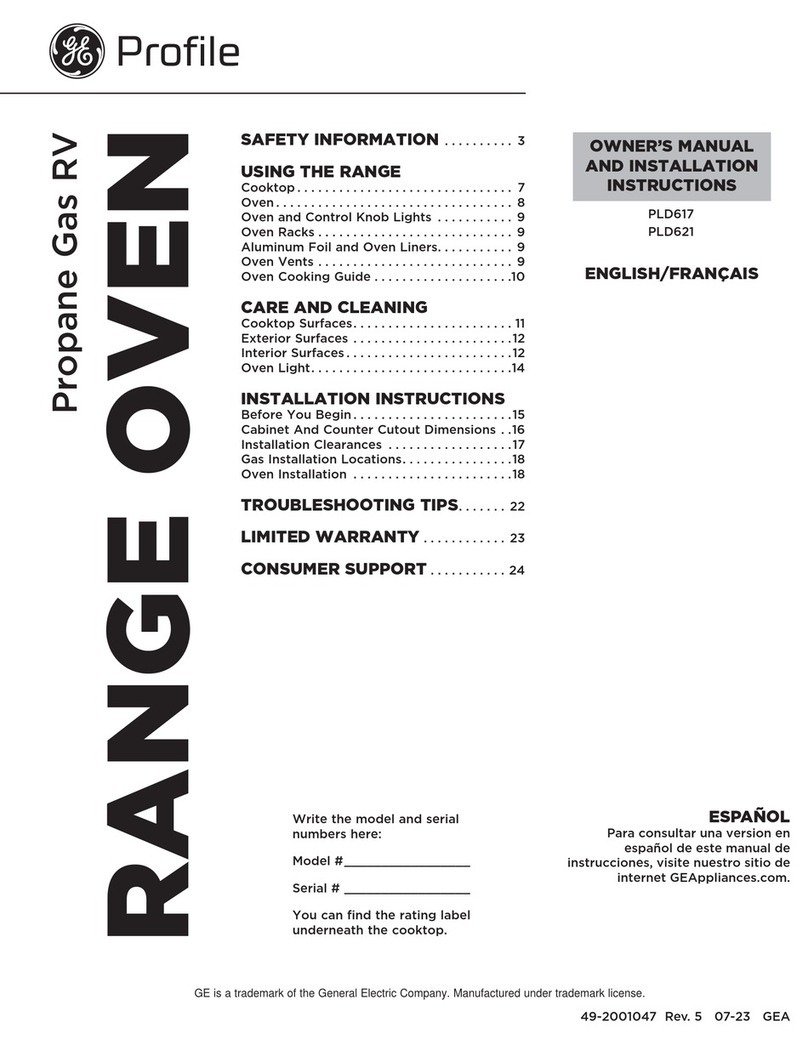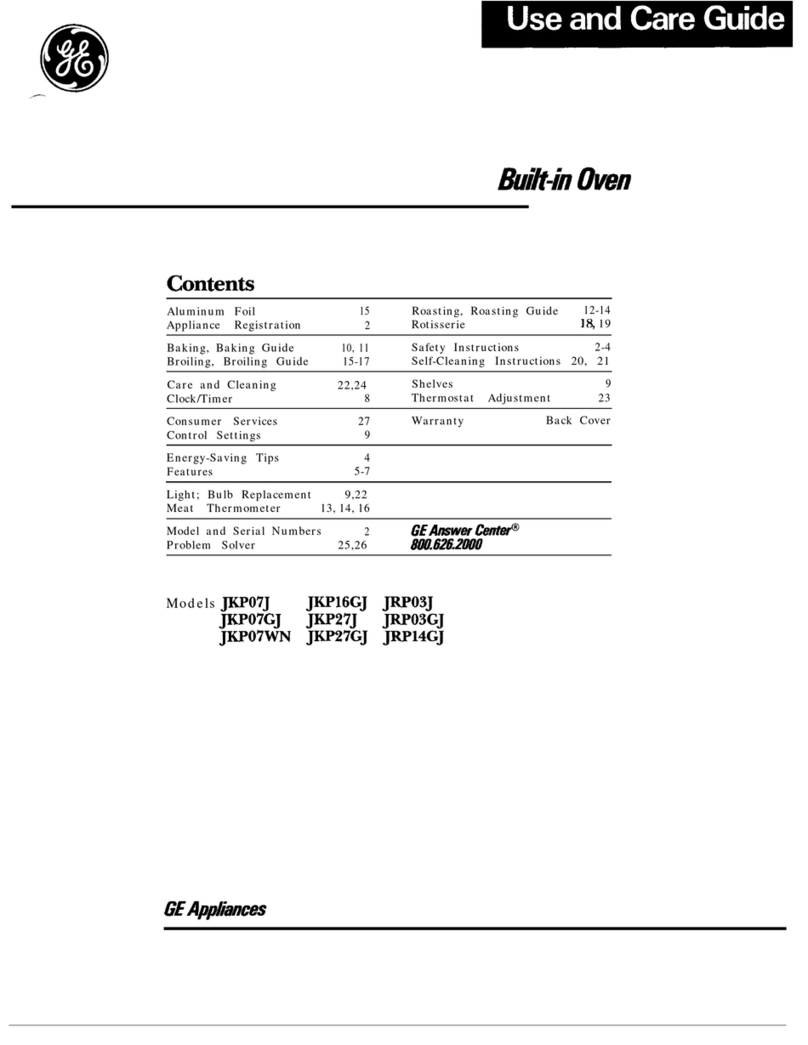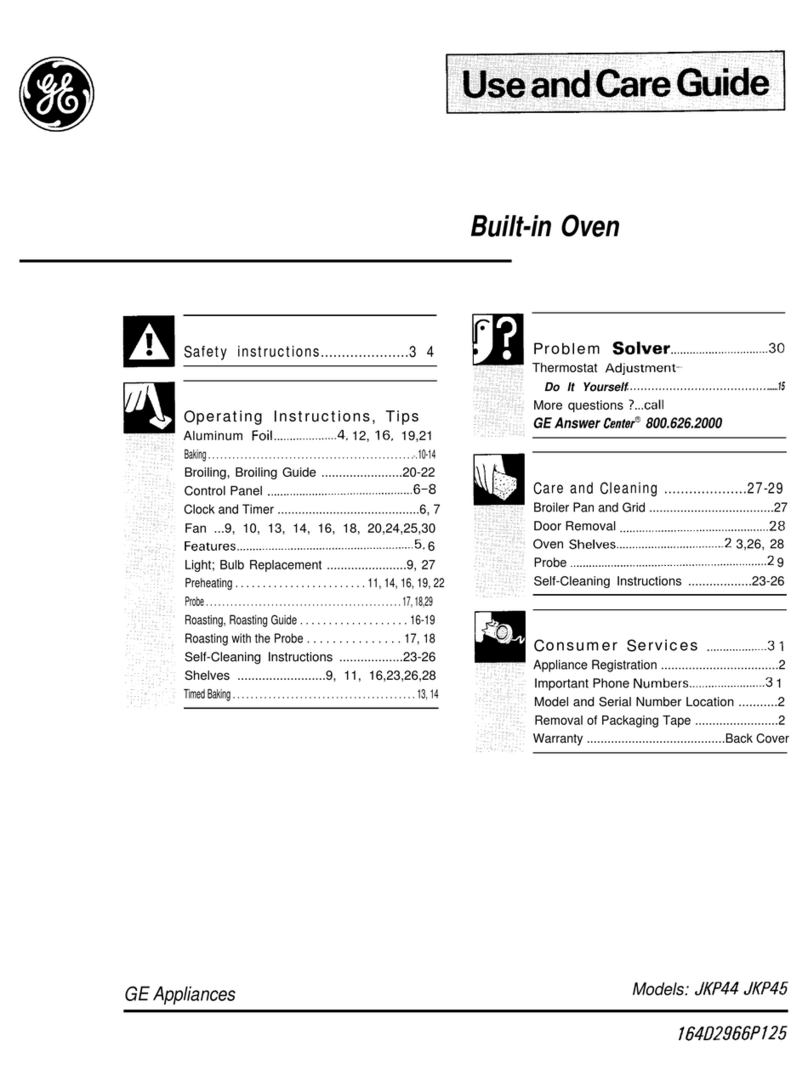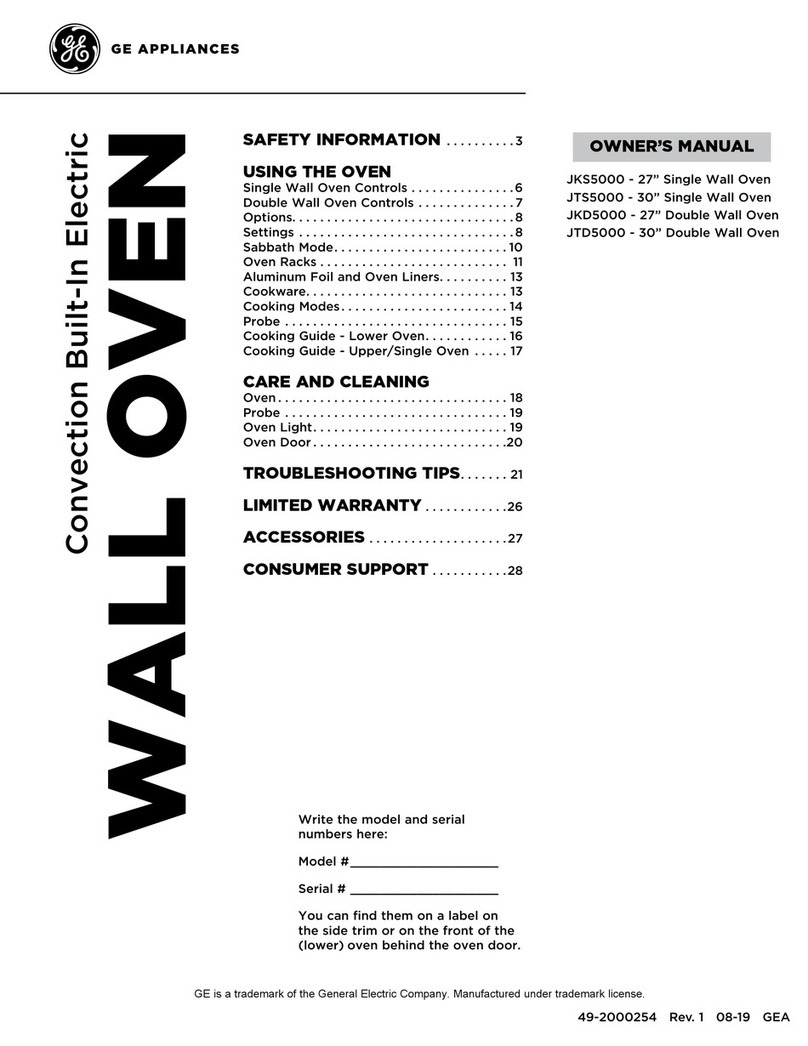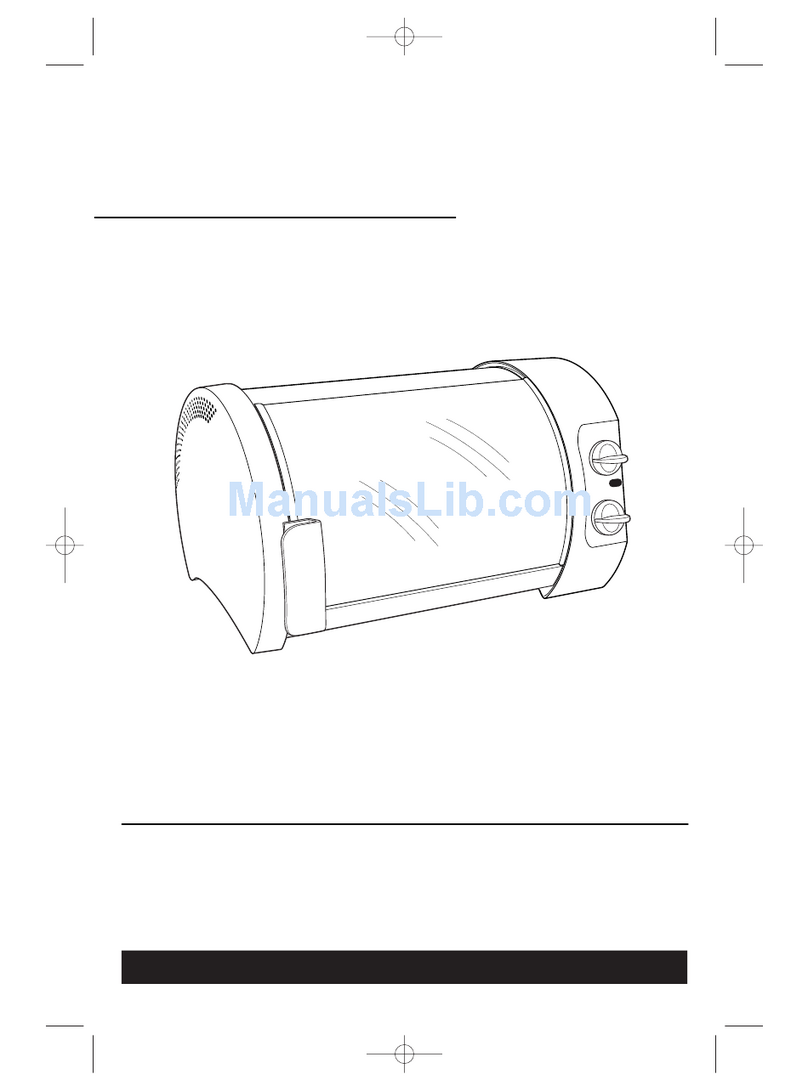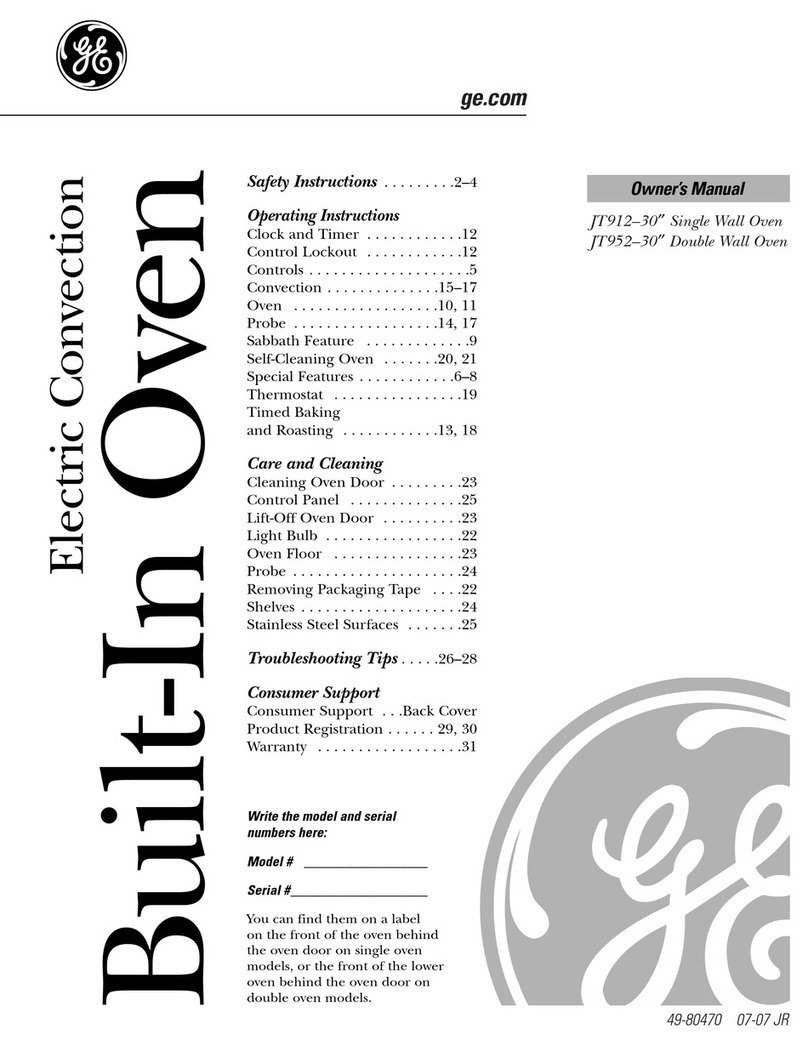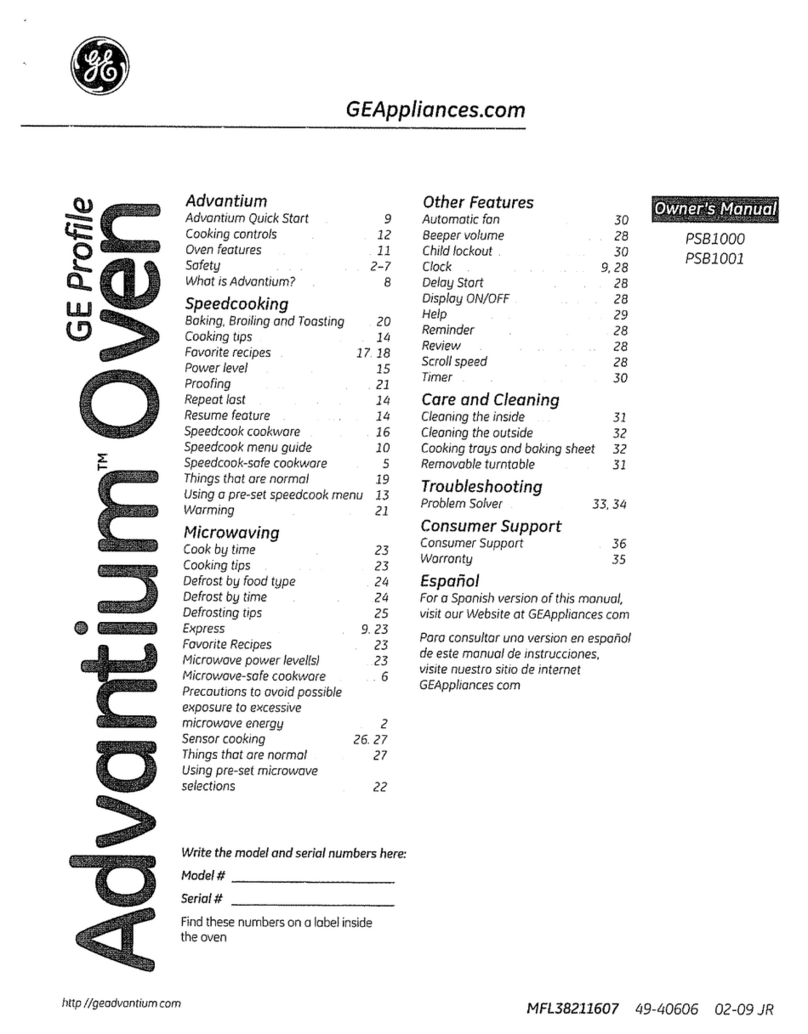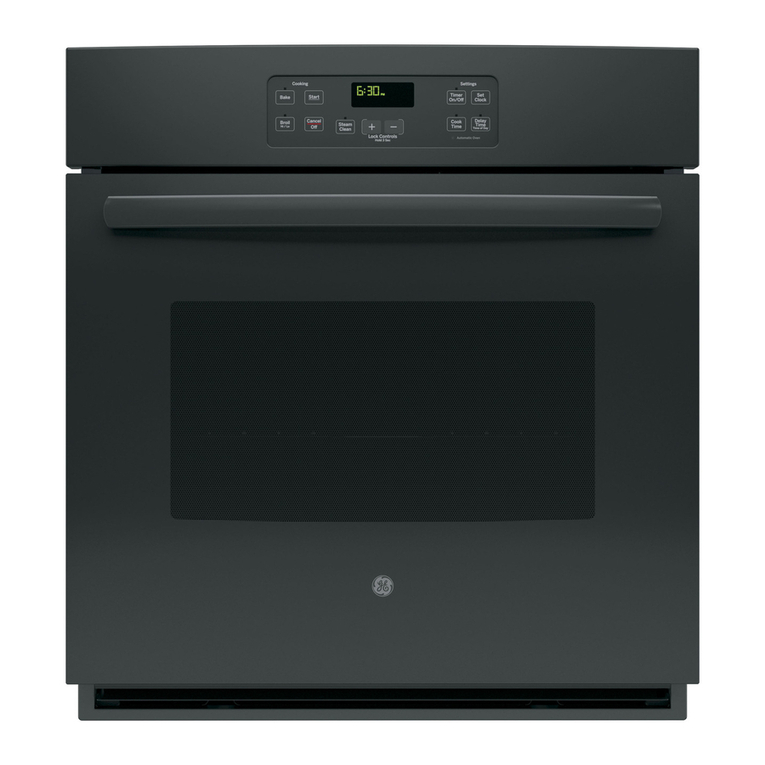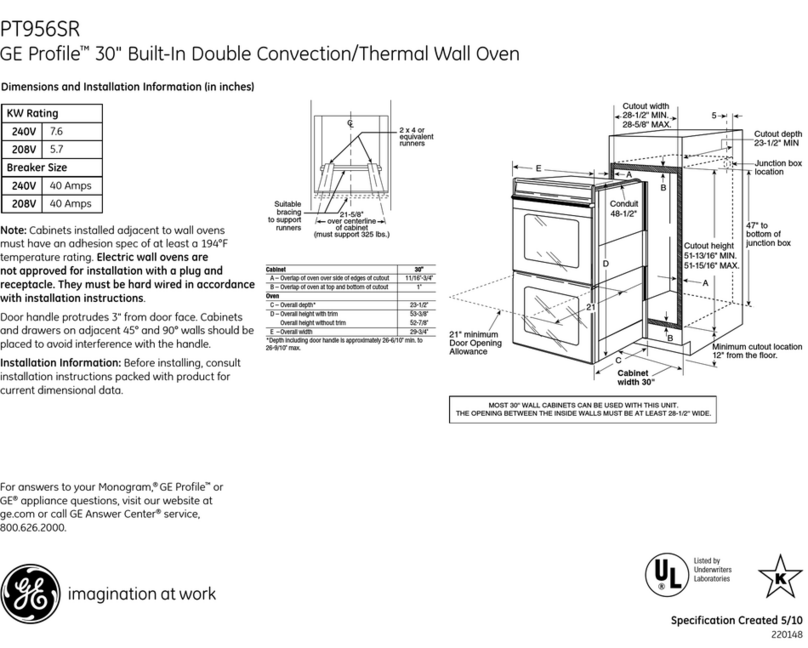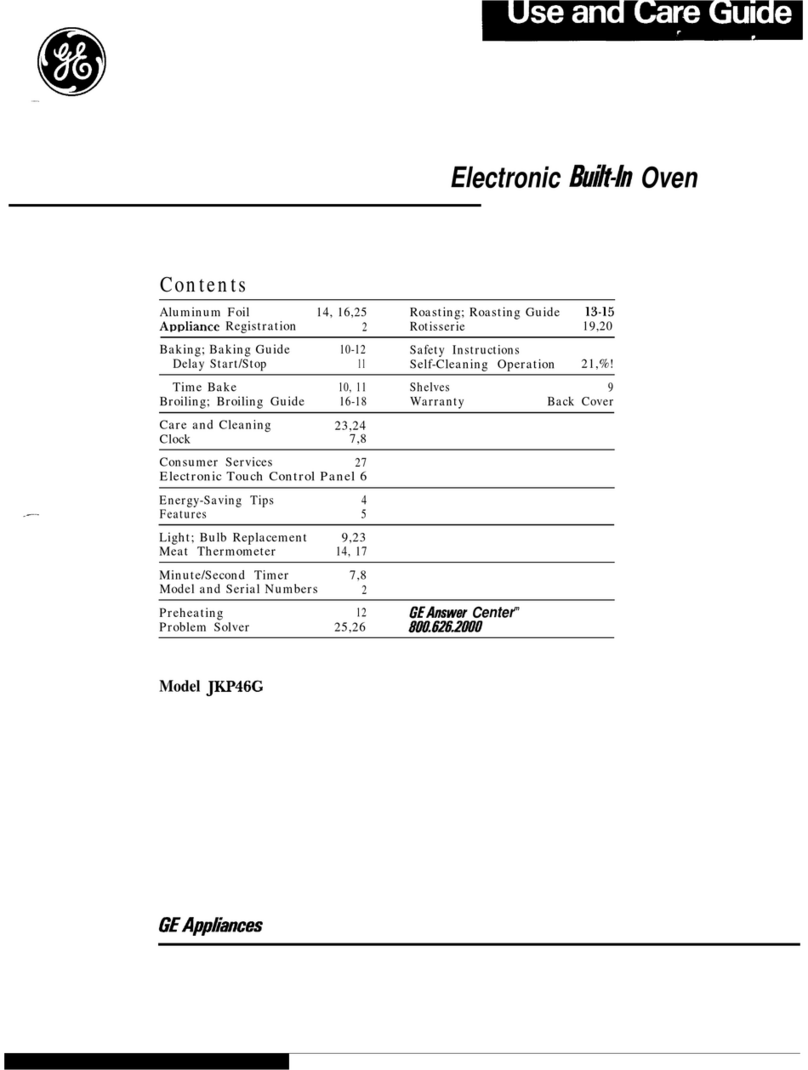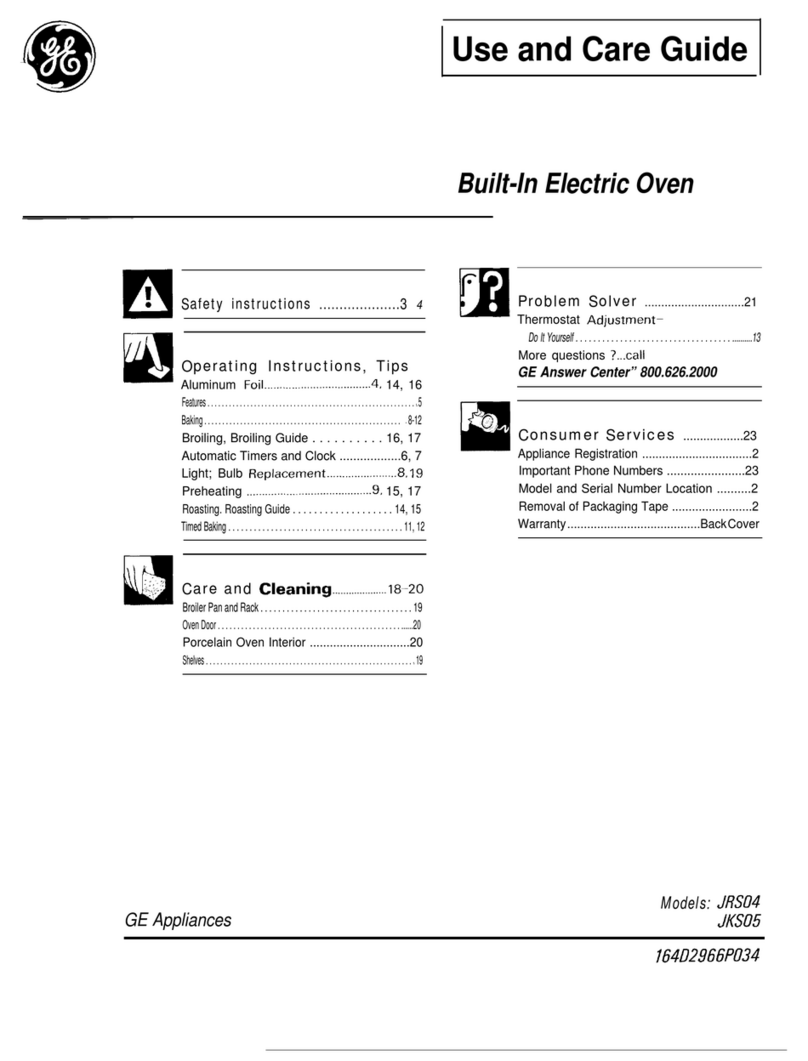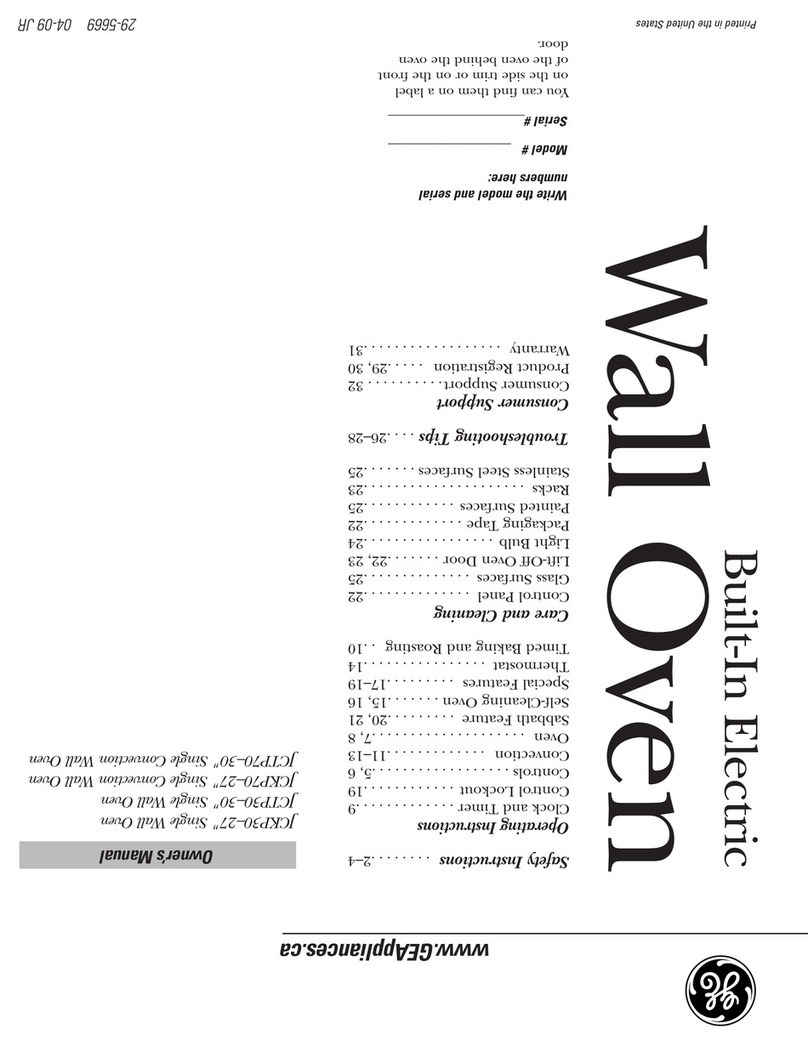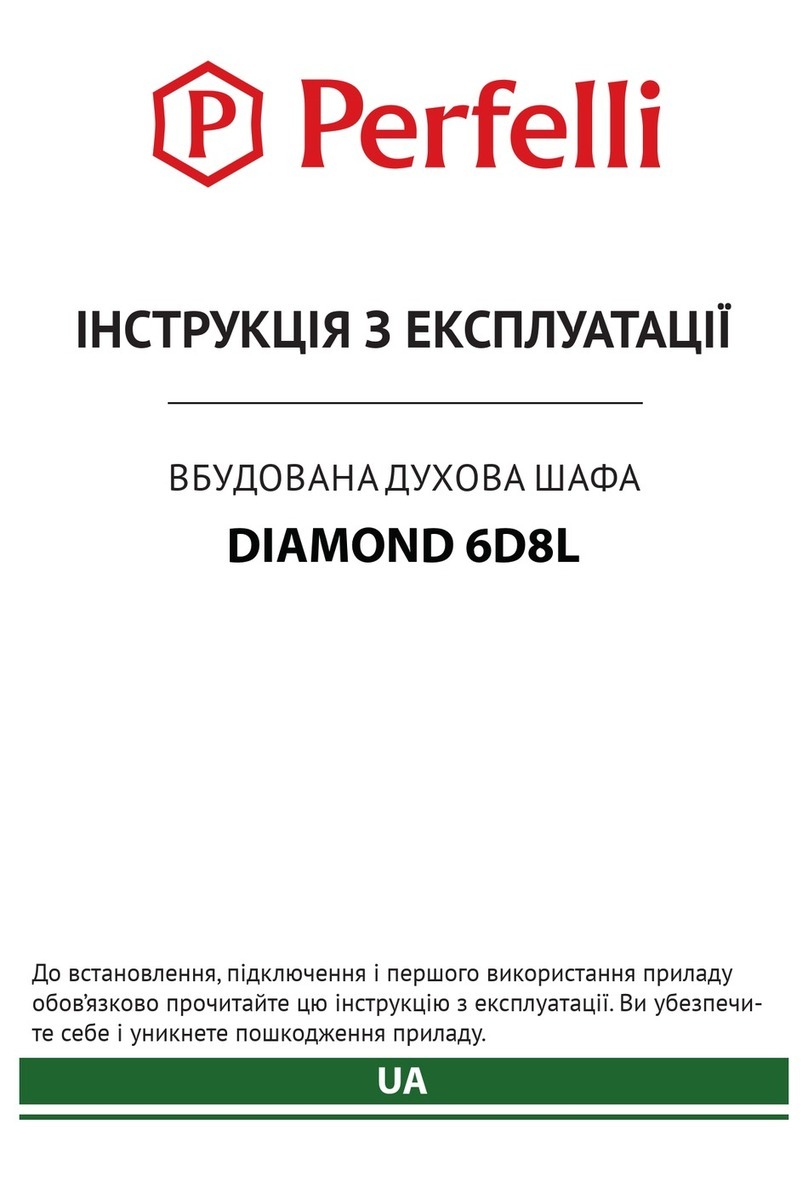
Important Safety Instructions
IMPORTANT SAFETY INSTRUCTIONS
Read all instructions before using this appliance.
IMPORTANT SAFETY NOTICE
• The California Safe Drinking Water and Toxic
Enforcement Act requires the Governor of
California to publish a list of substances known to
the state to cause cancer, birth defects or other
reproductive harm, and requires businesses to warn
customers of potential exposure to such substances.
• Gas appliances can cause minor exposure
to four of these substances, namely benzene,
carbon monoxide, formaldehyde and soot, caused
primarily by the incomplete combustion of natural
gas or LP fuels. Properly adjusted burners,
indicated by a bluish rather than a yellow flame,
will minimize incomplete combustion. Exposure
to these substances can be minimized further by
venting with an open window or using a
ventilation fan or hood.
When You Get Your Oven
• Have the installer show you the location of
the oven gas cut-off valve and how to shut it
off if necessary.
• Have your oven installed and properly
grounded by a qualified installer, in accordance
with the Installation Instructions. Any adjustment
and service should be performed only by qualified
gas oven installers or service technicians.
• Do not attempt to repair or replace any part of
your oven unless it is specifically recommended
in this guide. All other servicing should be
referred to a qualified technician.
• Be sure all packaging materials are removed
from the oven before operating it, to prevent
fire or smoke damage should the packaging
material ignite.
• Be sure the oven is securely installed in a
cabinet that is firmly attached to the house
structure. Never allow anyone to climb, sit, stand
or hang on the oven door.
• Be sure your oven is correctly adjusted by a
qualified service technician or installer for the
type of gas (Natural or LP) that is to be used.
Your oven can be converted for use on either type
of gas. See the Installation Instructions.
WARNING: These adjustments must be made
by a qualified service technician in accordance
with the manufacturer’s instructions and all codes
and requirements of the authority having
jurisdiction. Failure to follow these instructions
could result in serious injury or property damage.
The qualified agency performing this work
assumes responsibility for the conversion.
Using Your Oven
• Do not leave children alone or unattended
where an oven is hot or in operation. They
could be seriously burned.
• Do not allow anyone to climb, stand or hang
on the door or the broiler drawer. They could
damage the oven.
• CAUTION: ITEMS OF INTEREST TO
CHILDREN SHOULD NOT BE STORED IN
CABINETS ABOVE AN OVEN—CHILDREN
CLIMBING ON THE OVEN TO REACH
ITEMS COULD BE SERIOUSLY INJURED.
• Teach children not to play with the controls
or any other part of the oven.
• Never leave the oven door open when you are
not watching the oven.
•
Always keep combustible wall coverings, curtains
or drapes a safe distance from your oven.
• Never wear loose fitting or hanging garments
while using the appliance. Be careful when
reaching for items stored in cabinets over the
oven. Flammable material could be ignited if
brought in contact with flame or hot oven surfaces
and may cause severe burns.
• For your safety, never use your appliance for
warming or heating the room.
• Do not use water on grease fires.
Smother fire or flame or use a multi-
purpose dry chemical or foam-type
fire extinguisher.
Flame in the oven can be smothered completely
by closing the oven door and turning the oven
off or by using a multi-purpose dry chemical or
foam-type fire extinguisher.
(continued next page)
3
